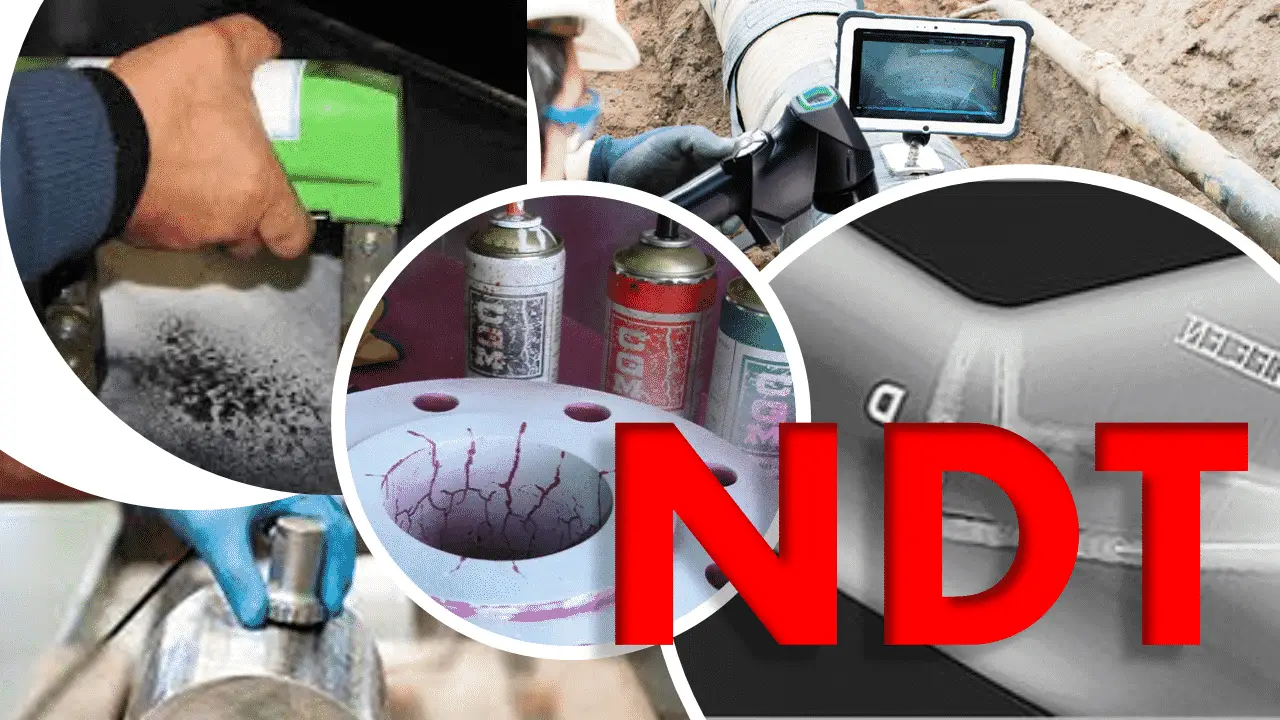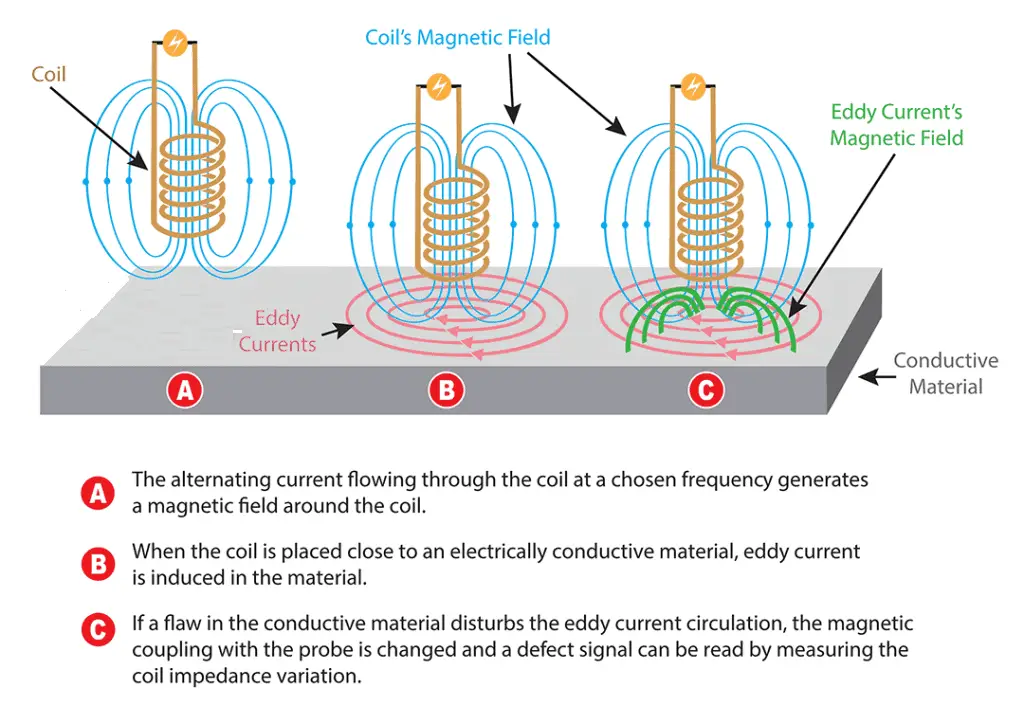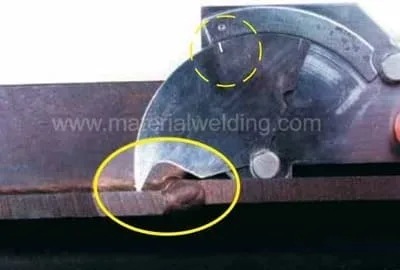What is Destructive Testing?
Destructive testing (DT) is a type of testing that involves applying an external force, pressure, or condition to a material or component to cause damage or failure and permanent change in the shape of the specimen. DT is used to understand the mechanical properties of materials or components, verify design parameters, and test for defects or flaws that may cause failure under extreme conditions. The results obtained from DT are crucial for the development and improvement of materials and components used in various industries such as aerospace, automotive, construction, and manufacturing.
Types of Destructive Testing
The top 10 main types of DT methods used to test different properties of materials or components are:
- Tension Testing
- Compression Testing
- Bend Testing
- Hardness Testing
- Impact Testing
- Fatigue Testing
- Fracture Testing
- Shear Testing
- Torque Testing
- Peel Testing
1. Tension Test
A tension test is a type of destructive testing method that is used to evaluate the mechanical properties of a material under tensile stress. During a tension test, a specimen of the material is placed in a testing machine and a force is applied to the specimen in a uniaxial manner, pulling it in opposite directions along its longitudinal axis. As the force is increased, the specimen undergoes deformation, and eventually, it will reach its maximum load capacity and fracture.
The data collected during the test is used to determine the tensile strength, yield strength, elongation, and reduction of area of the material. These properties are critical in determining the material’s suitability for a particular application, such as in the construction of bridges, buildings, or aircraft.
The results of the tension test can also be used to calculate other important mechanical properties, such as the modulus of elasticity, shear strength, and Poisson’s ratio. The tension test is a standard method of testing for many industries, and the results obtained from this test can help to ensure the safety and reliability of materials used in a wide range of applications.
2. Compression Testing
By applying a compressive force to a material until it breaks or deforms, compression testing is a technique for determining the compressive strength of a material. The behavior and quality of materials like concrete, metal, plastic, rubber, and foam are frequently evaluated using this test in materials science and engineering. A sample of the material is used for the test, which involves compressing it between two flat plates or cylindrical plates until it fails. The sample’s maximum load before failing is determined, and this value is used to determine the material’s compressive strength.
3. Bend Testing
Bend testing is a mechanical testing method used to evaluate the flexibility, ductility, and strength of materials such as metals, plastics, and composites. The test involves bending a sample of the material to a specific angle or curvature until it fractures or exhibits a permanent deformation.
During the test, the sample is placed on two supports and a load is applied at a specific point or points along its length. The load is increased gradually until the material begins to deform or break. The maximum load that the material can withstand before failure or a specified amount of deformation occurs is measured and used to calculate the material’s bend strength, flexibility, and ductility.
4. Hardness Testing
Hardness testing is a mechanical testing method used to determine the resistance of a material to permanent deformation, such as scratching, cutting, or indentation. It is an important measure of a material’s strength, durability, and wear resistance.
There are several main types of hardness testing:
- Rockwell hardness test: This is one of the most common hardness testing methods, and involves pressing a diamond or tungsten carbide indenter into the surface of the material under a fixed load. The depth of the indentation is measured and used to calculate the material’s hardness.
- Brinell hardness test: In this method, a hardened steel ball or carbide ball is pressed into the surface of the material under a specific load. The diameter of the resulting indentation is measured and used to calculate the material’s hardness.
- Vickers hardness test: This method uses a diamond indenter to make a square-shaped indentation in the material under a specified load. The size of the indentation is measured and used to calculate the material’s hardness.
- Knoop hardness test: This is a micro-hardness test that uses a diamond pyramid-shaped indenter to make a small indentation in the material under a specific load. The length of the indentation is measured and used to calculate the material’s hardness.
5. Impact Testing
Charpy impact testing is a method of testing the toughness and impact strength of a material, typically metals. It involves striking a notched or pre-cracked specimen with a pendulum-style hammer, causing it to fracture. The amount of energy absorbed by the specimen during the impact is measured, and this energy absorption value is used to evaluate the material’s resistance to brittle fracture and its ability to absorb energy in a dynamic impact situation.
During the test, the specimen is placed in a fixture and supported at both ends, with a notch or pre-crack made in the center. The pendulum is released from a specific height and strikes the specimen at the notch, causing it to fracture. The amount of energy absorbed by the specimen is measured by the difference in the height of the pendulum before and after the impact, and this value is used to calculate the material’s toughness.
6. Fatigue Testing
Fatigue testing is a type of mechanical testing used to evaluate the durability and performance of a material or component under cyclic loading conditions. It involves subjecting the material to repeated cycles of stress or strain, with the amplitude and frequency of the cycles controlled and measured.
The purpose of fatigue testing is to determine the material’s resistance to failure or damage caused by cyclic loading, and to evaluate its behavior and performance over time. This is particularly important in applications where the material is subjected to repeated loading or stress, such as in machinery, vehicles, or structural components.
During the test, a sample of the material or component is subjected to repeated cycles of stress or strain, with the amplitude and frequency of the cycles controlled and measured. The test is typically conducted using a fatigue testing machine, which applies the cyclic loading and measures the response of the material or component.
The results of fatigue testing are used to evaluate the material’s endurance limit, fatigue strength, and fatigue life, which can be used to determine its suitability for a particular application. Fatigue testing is commonly used in the aerospace, automotive, and manufacturing industries to evaluate the performance and durability of materials and components, and to ensure that they meet industry standards and specifications for fatigue resistance.
7. Fracture Testing
Fracture testing evaluates the behavior of materials or components under load until they fracture or fail. The test is conducted to determine the strength, toughness, and ductility of the material or component.
During the test, the material or component is loaded with a gradually increasing force until it reaches a point of fracture. The fracture is then analyzed to determine the mode and location of failure, and to evaluate the material’s resistance to crack propagation, ductility, and fracture toughness.
There are several types of fracture testing, including tension, compression, bending, and torsion testing. Each type of test is used to evaluate different properties of the material or component, such as its resistance to tension, compression, bending, or torsion forces.
8. Shear Testing
Shear testing measures the shear strength of a material. It involves subjecting a sample of the material to a force that is applied parallel to the plane of the material, causing it to deform and eventually fracture. The amount of force required to cause the material to fail in shear is known as its shear strength.
There are several different methods for conducting shear testing, depending on the type of material being tested and the equipment available. Some common methods include torsion testing, which involves twisting a cylindrical sample to induce shear deformation, and lap shear testing, which involves bonding two flat samples together and pulling them apart along a plane parallel to the surface.
9. Torque Testing
Torque testing measures the torque or rotational force required to rotate a component or material. This testing is typically used to evaluate the performance of fasteners, such as bolts and screws, as well as other components that experience rotational forces, such as gears and shafts.
The primary goal of torque testing is to determine the maximum amount of torque that a component can withstand before it fails. To perform a torque test, a device called a torque wrench is used to apply a rotational force to the component being tested. The torque wrench is calibrated to provide an accurate measurement of the applied torque.
There are several different types of torque testing, including static torque testing and dynamic torque testing. In static torque testing, the torque is applied slowly and steadily, allowing the component to reach its maximum torque capacity before it fails. In dynamic torque testing, the torque is applied in a cyclic or oscillating manner, simulating the actual working conditions of the component.
10. Peel Test
Peel testing measures the adhesion strength of an adhesive bond between two materials. It involves applying a tensile force to a bonded joint in a direction that is parallel to the plane of the bond, causing one of the materials to peel away from the other. The amount of force required to separate the two materials is known as the peel strength or peel force.
There are several different methods for conducting peel testing, including 90-degree peel testing and 180-degree peel testing. In 90-degree peel testing, the bonded materials are pulled apart at a 90-degree angle to the plane of the bond, while in 180-degree peel testing, the bonded materials are pulled apart at a 180-degree angle.







